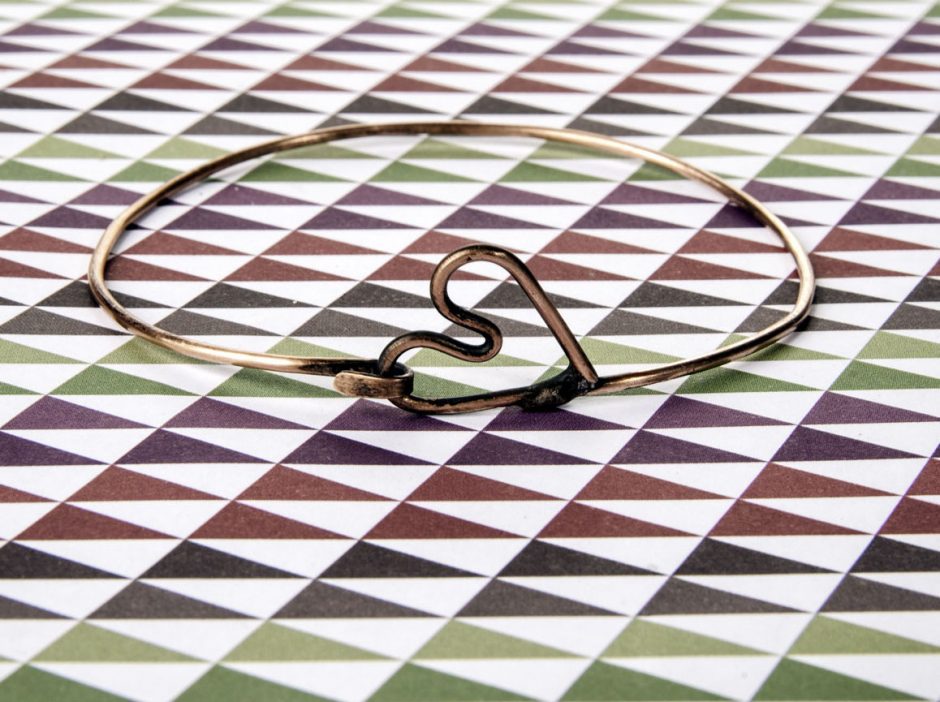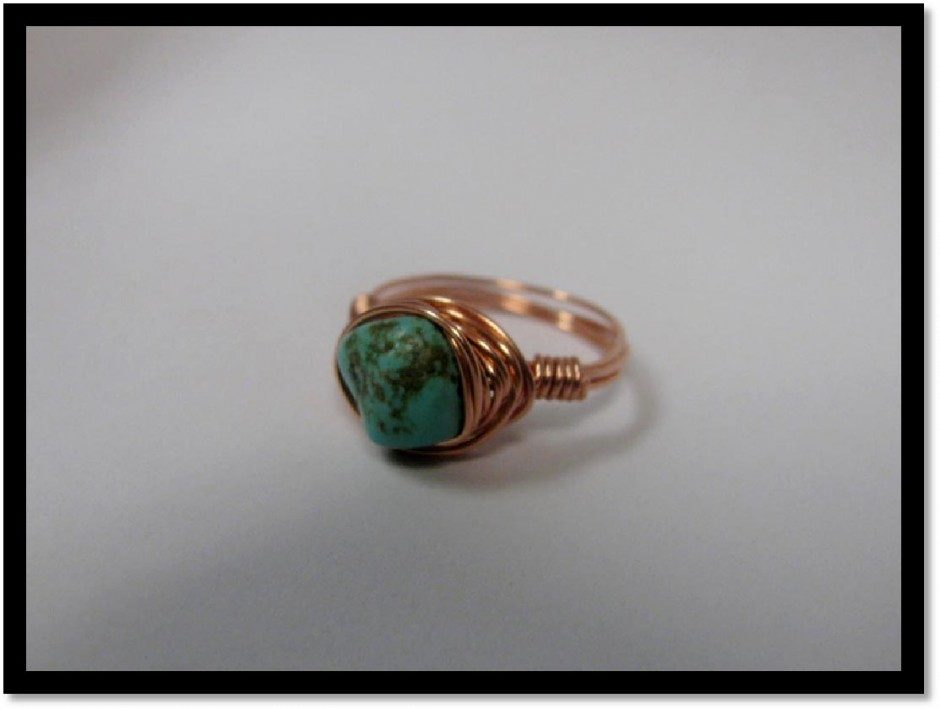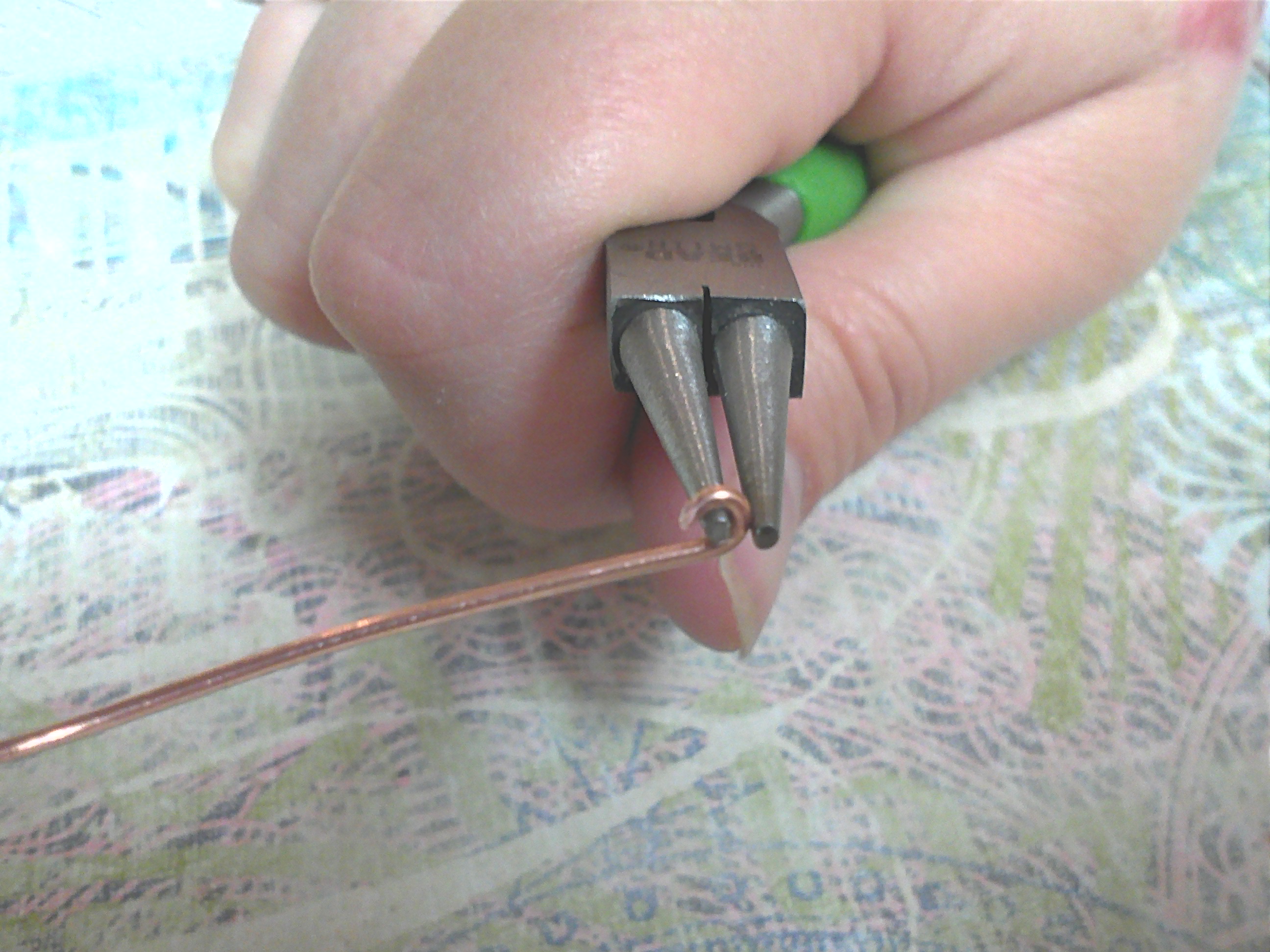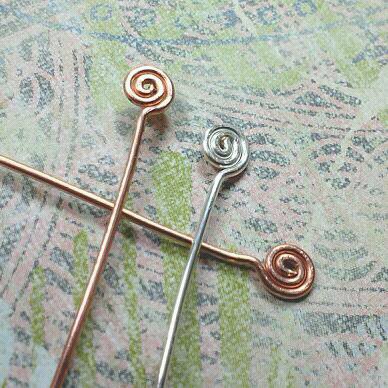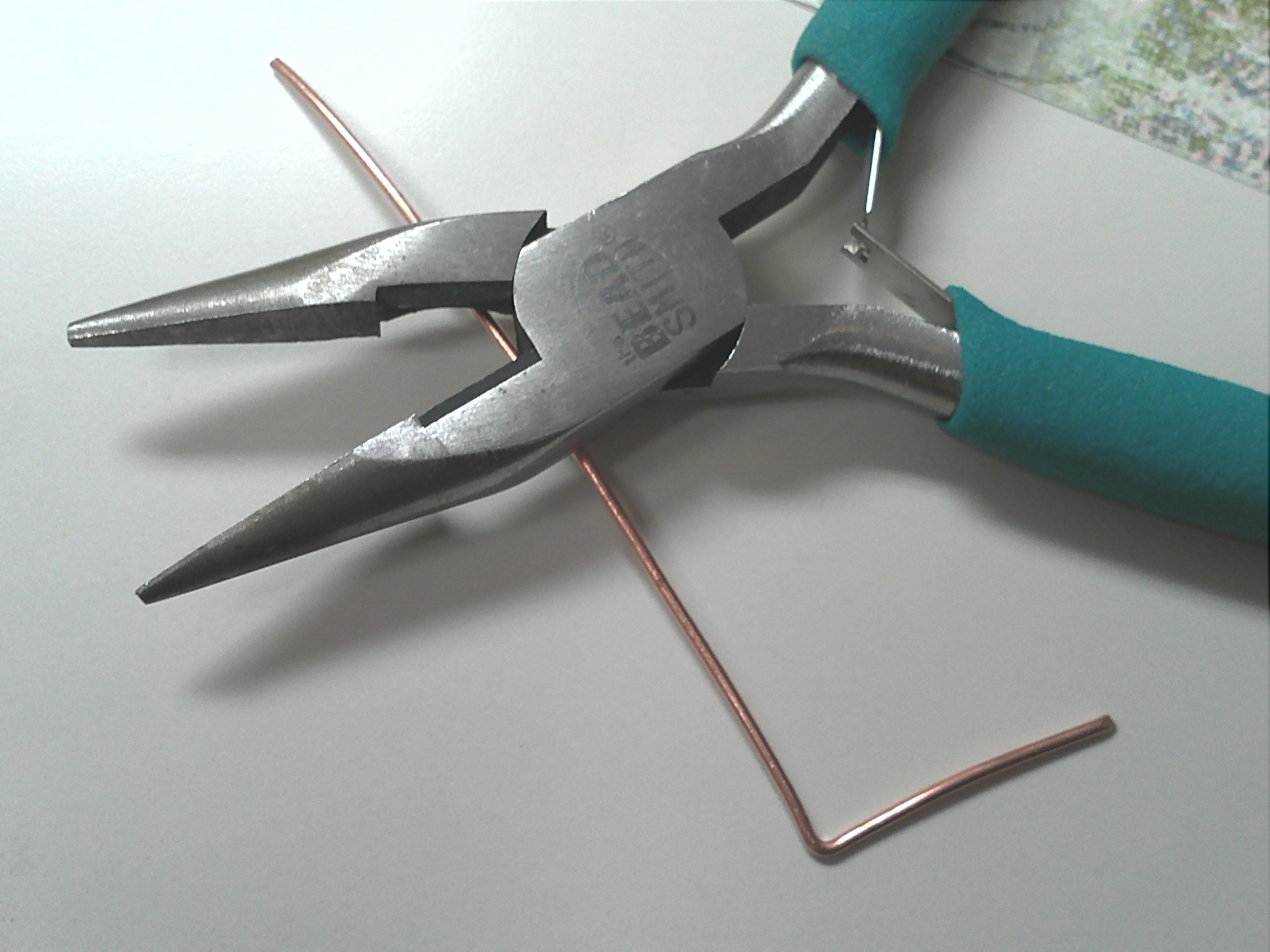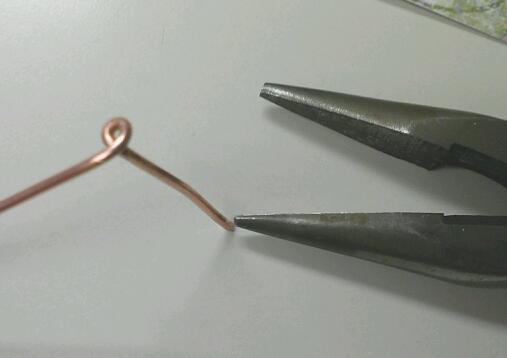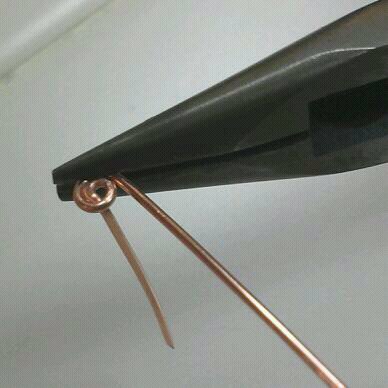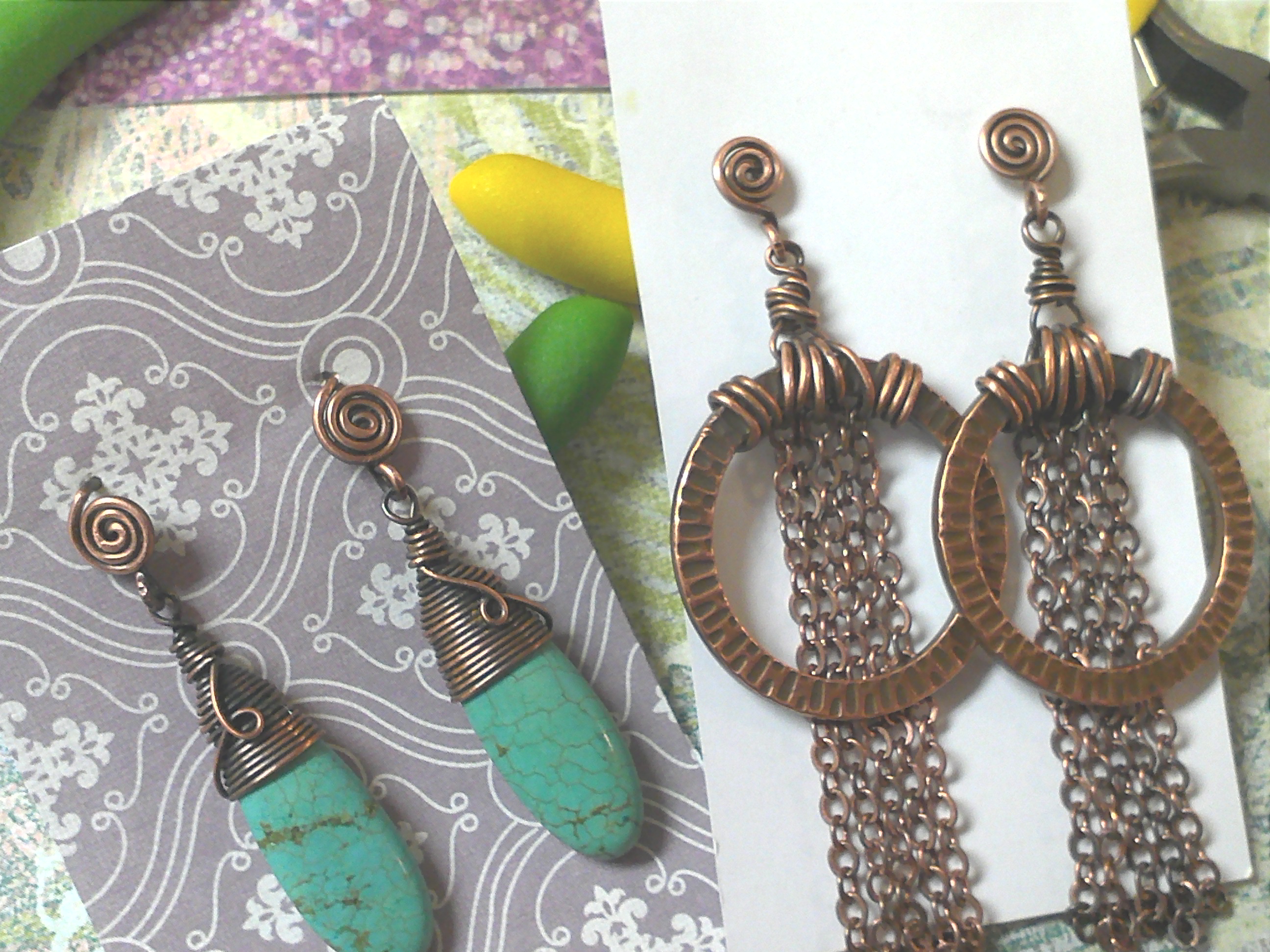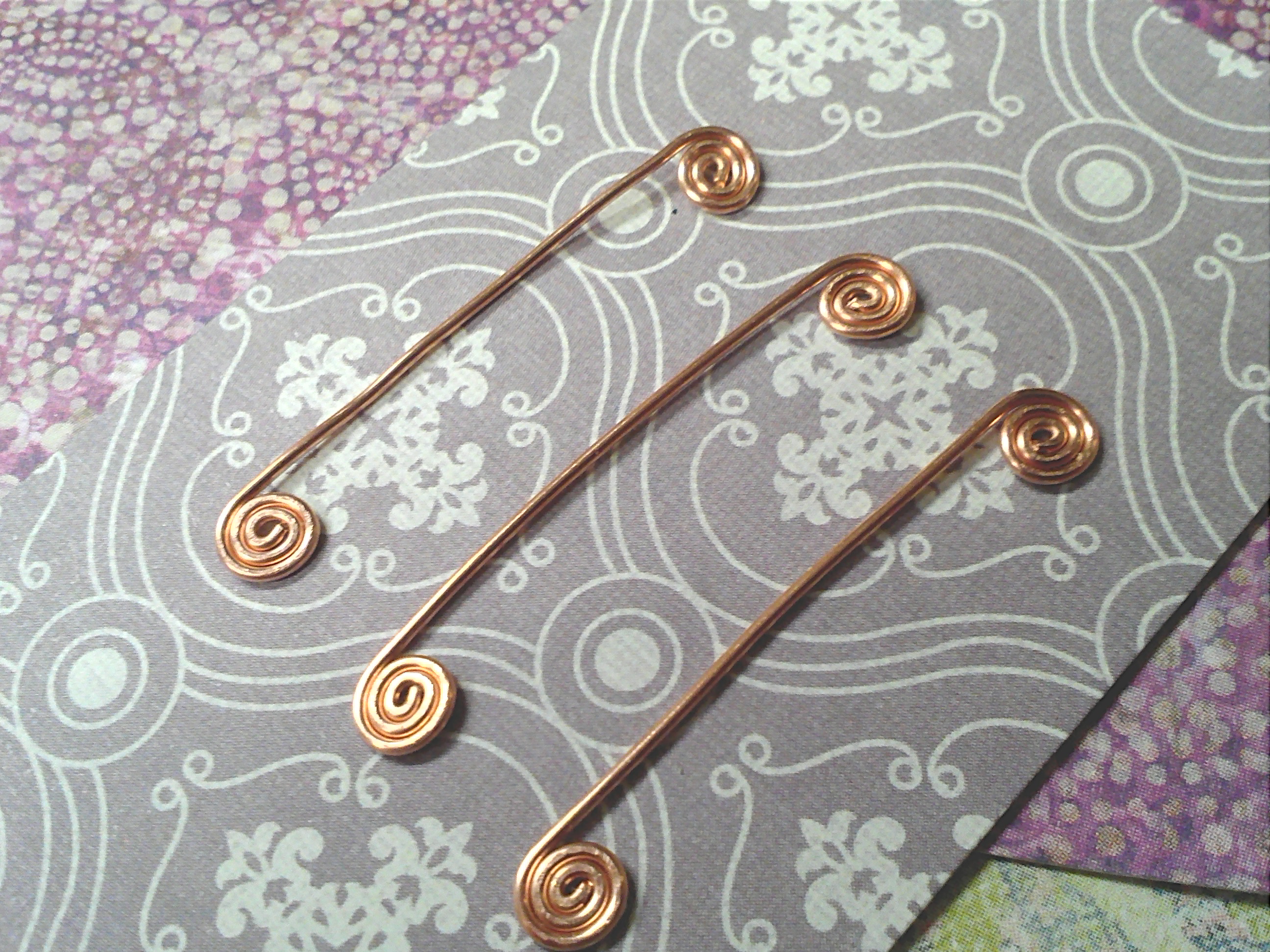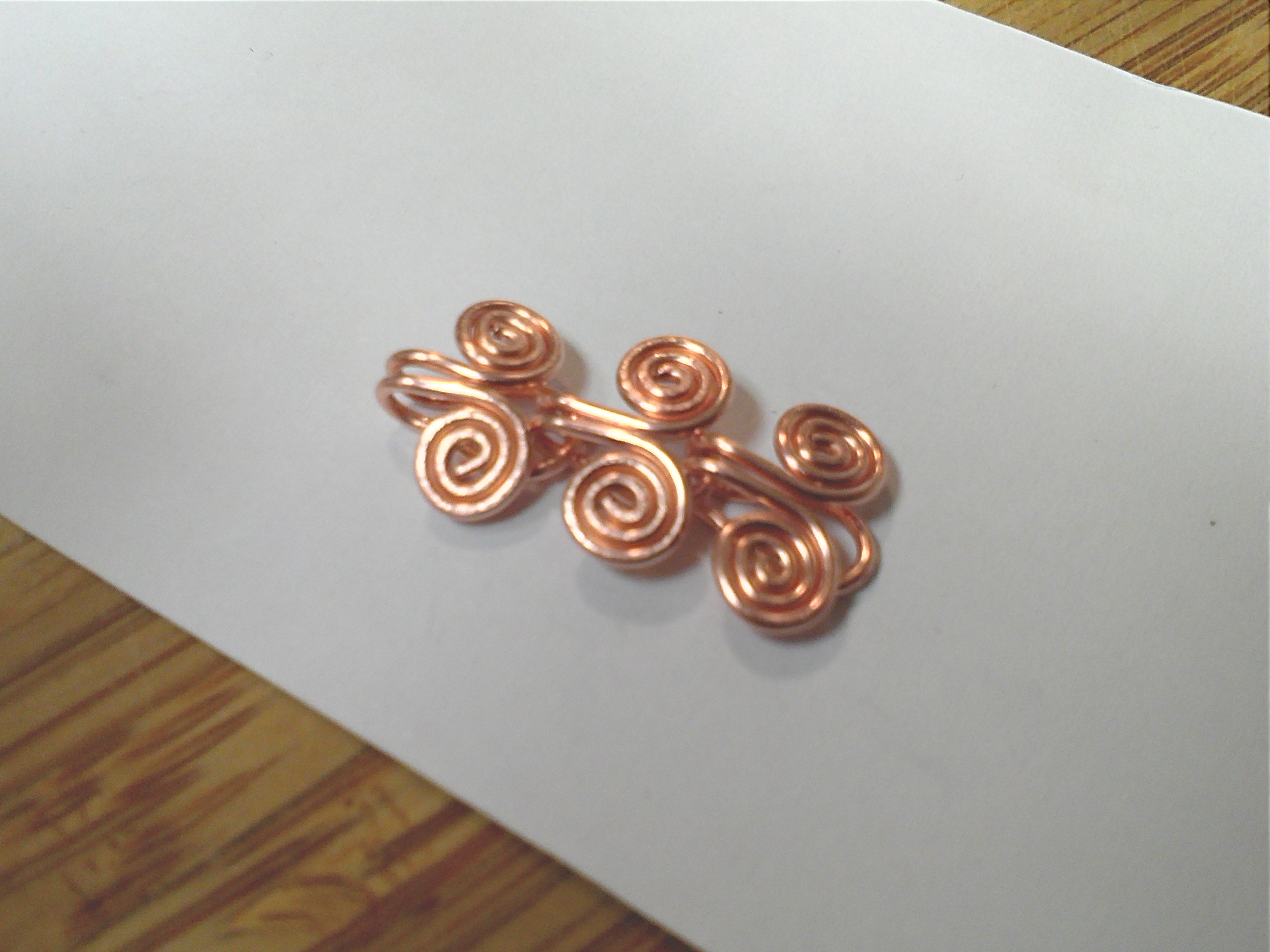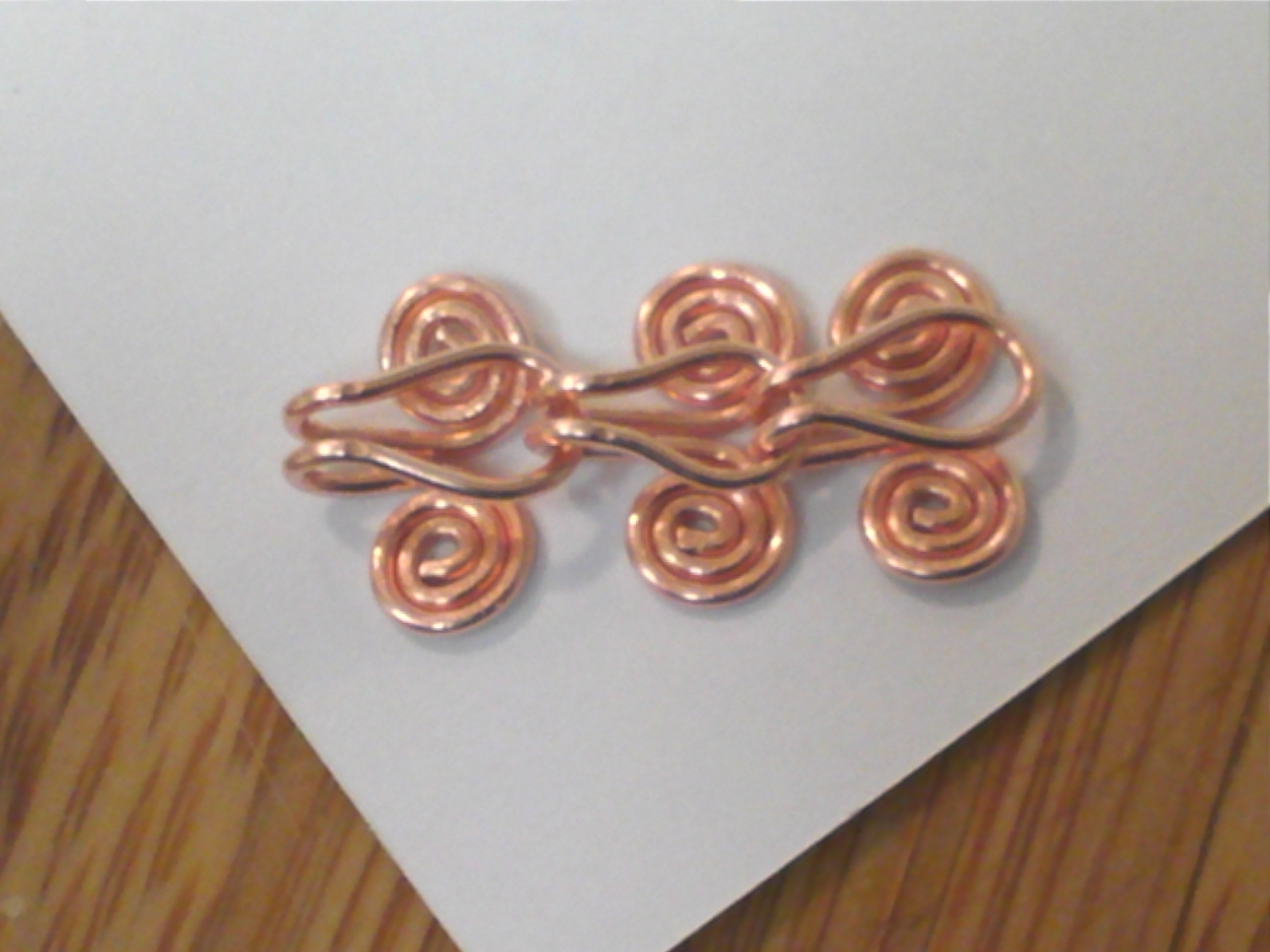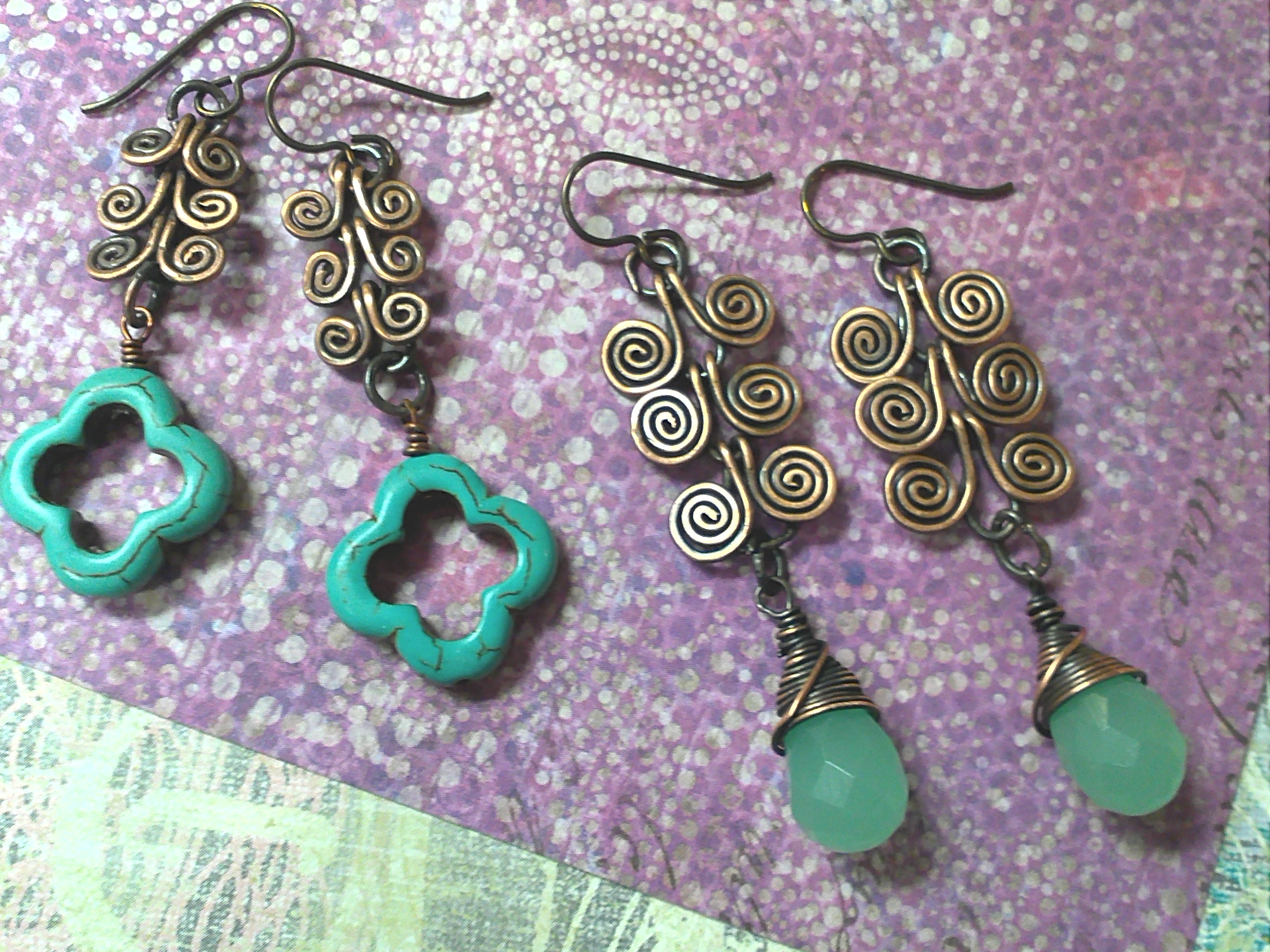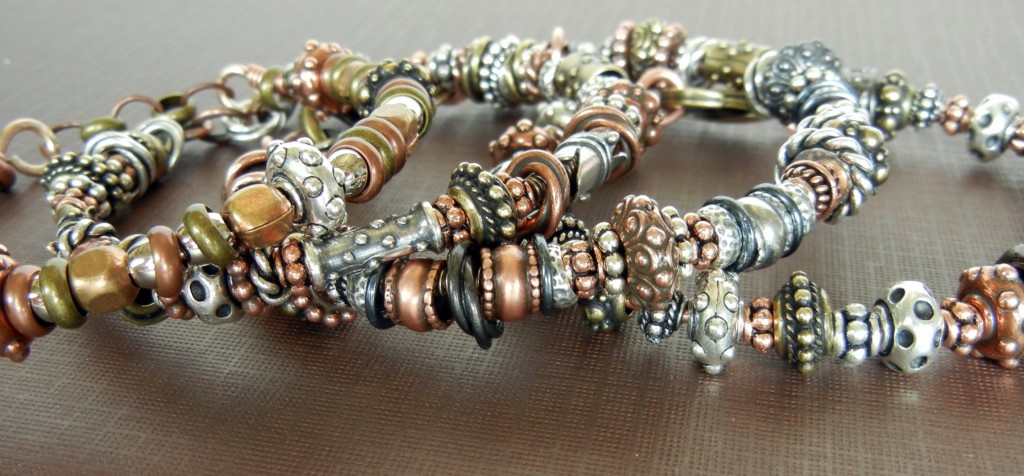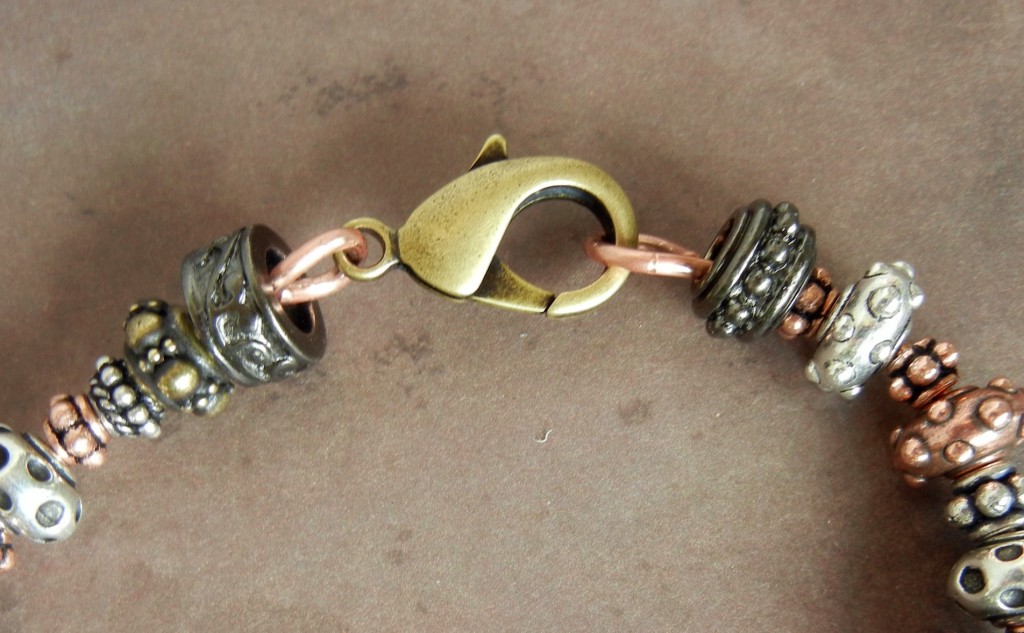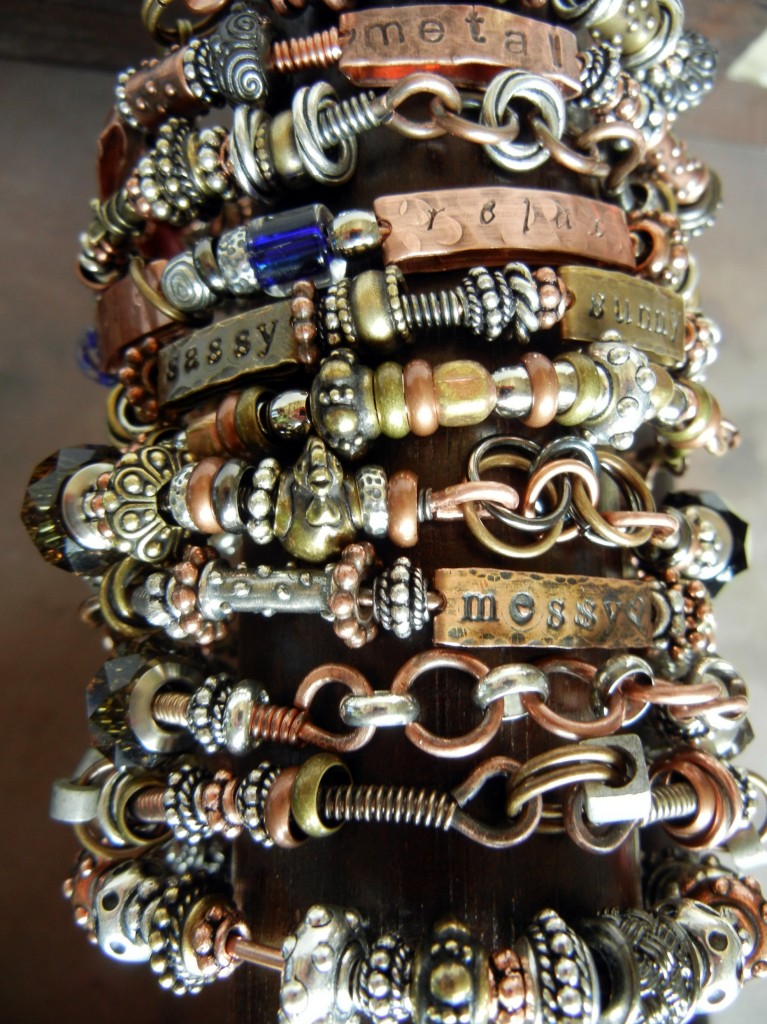The popularity of bracelets just keeps increasing, and having fallen in love with some similar styles, I decided to tackle copper soldering and hand formed wire bracelet making in the same project.
Continue Reading…
DIY: Funky Bohemian Turquoise Spike Jewelry Set
February 3, 2015I love the look of turquoise! I always have. It is very bohemian and hippie chic. Recently, while watching The Bachelor (we all have our guilty pleasures) I noticed that one of the girls was wearing jewelry containing the very turquoise magnesite spikes that we carry at Rings & Things! So I decided to make my own copycat version of her designer jewelry. It was super easy! —
How to Make a Wickedly Simple Wire Wrapped Ring
August 13, 2014Making a wire-wrapped ring is a simple jewelry making project that stays in style year round. When autumn approaches, a Halloween themed wire wrapped ring makes an extra fun jewelry statement!
Continue Reading…
Three Great Ways to Incorporate Swirls into your Jewelry
October 12, 2011For as long as I can remember I have loved making swirly curly-Q designs. In middle school, my favorite pee-chee folders were covered in them. Well I’ve grown out of my doodling habits, mostly, but I still love those swirls! Unwilling to give up on swirls altogether I have found three great ways to incorporate them into your jewelry with the help of a little wire. Adding a simple curly-Q can take any design idea from ordinary to whimsical! You can make your swirls free form using pliers or try this great Spiral Maker to eliminate marks from pliers! (Editor’s note: We now have THREE spiral makers plus a variety of coiling Gizmos!)
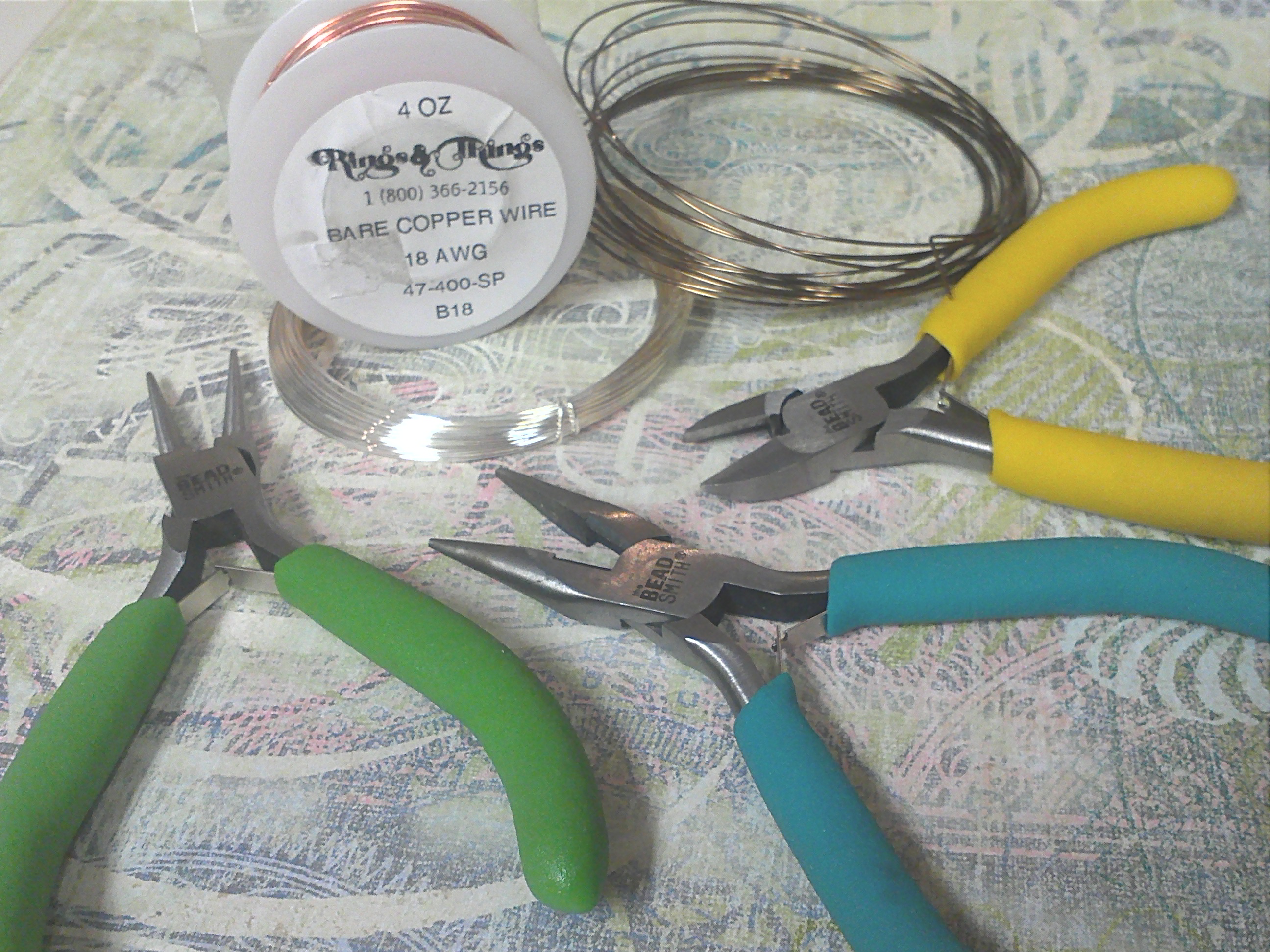
All of these projects can be made using your basic tools and 18, 20 or 22 gauge wire. The tools here are a from a fabulous mini tool set that I keep at my desk. The set is only $12 and includes these three tools plus tweezers and a mini bead board!
1. Swirly Head Pins
The first and easiest way to add some swirl power to your jewelry is to make curly-ended headpins. Making your own headpins out of wire is easy and gives your jewelry an even more hand-crafted look. I recommend using either 18, 20 or 22 gauge wire. (18 being the thickest, 22 being the thinnest) Keep in mind the size of beads you plan to use. If your beads have smaller holes, you will need thinner wire.
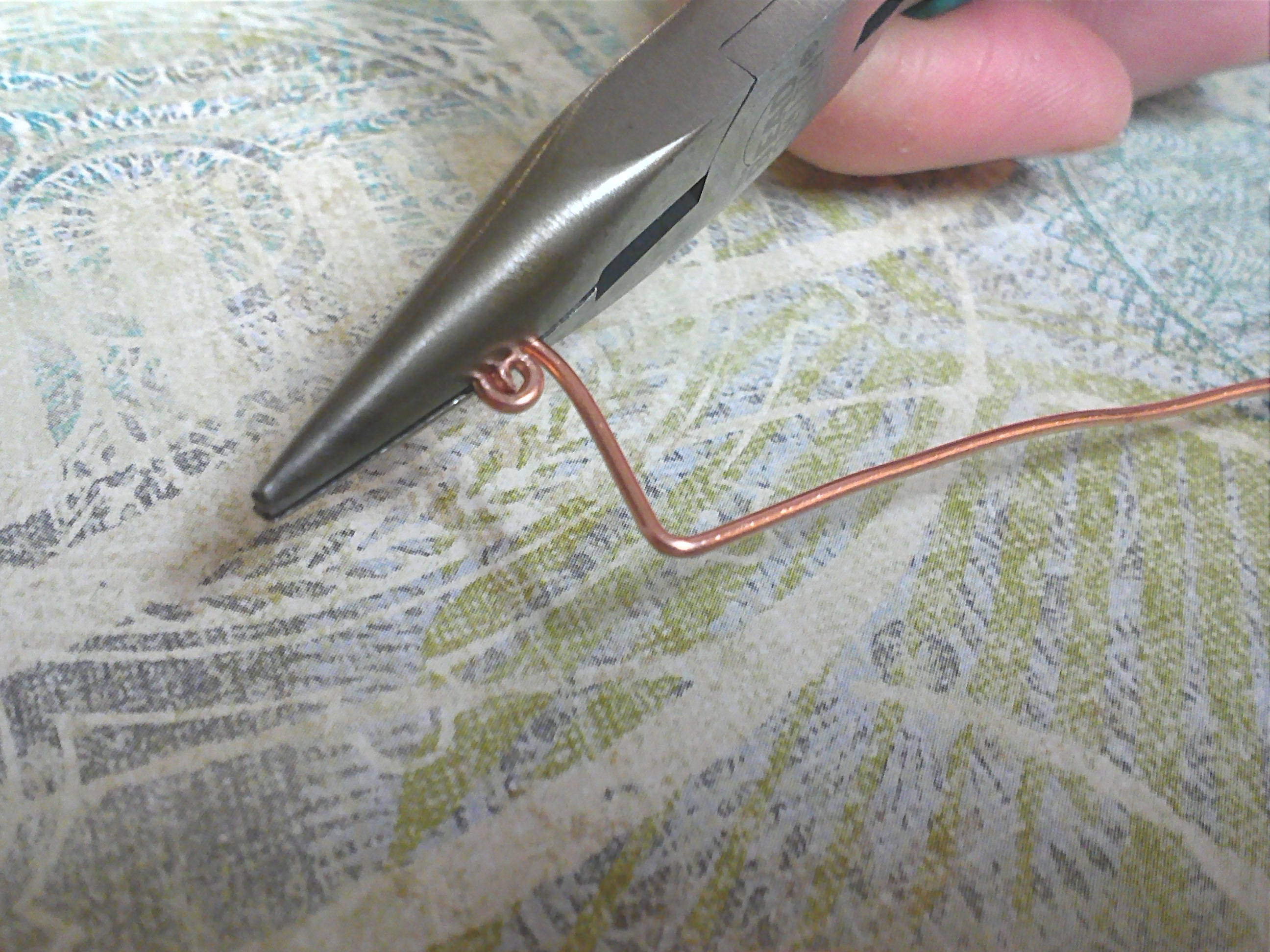
Make a right angle with your chain nose pliers so that your head pins have nice perpendicular look at the end.

Finished jewelry made using swirly head pins. Both earrings have been antiqued to emphasize the swirl design.
2. Swirly Post Earrings
Making your own swirly post earring findings is actually quite simple. I personally like to use 18 gauge for sturdiness, though standard earring wires are not usually that thick. Most earring findings are no thicker than a 20 gauge. It’s up to you, though know if you do use 18 gauge, you will probably have to use a rubber earring back as most metal nuts won’t fit that thick of wire.
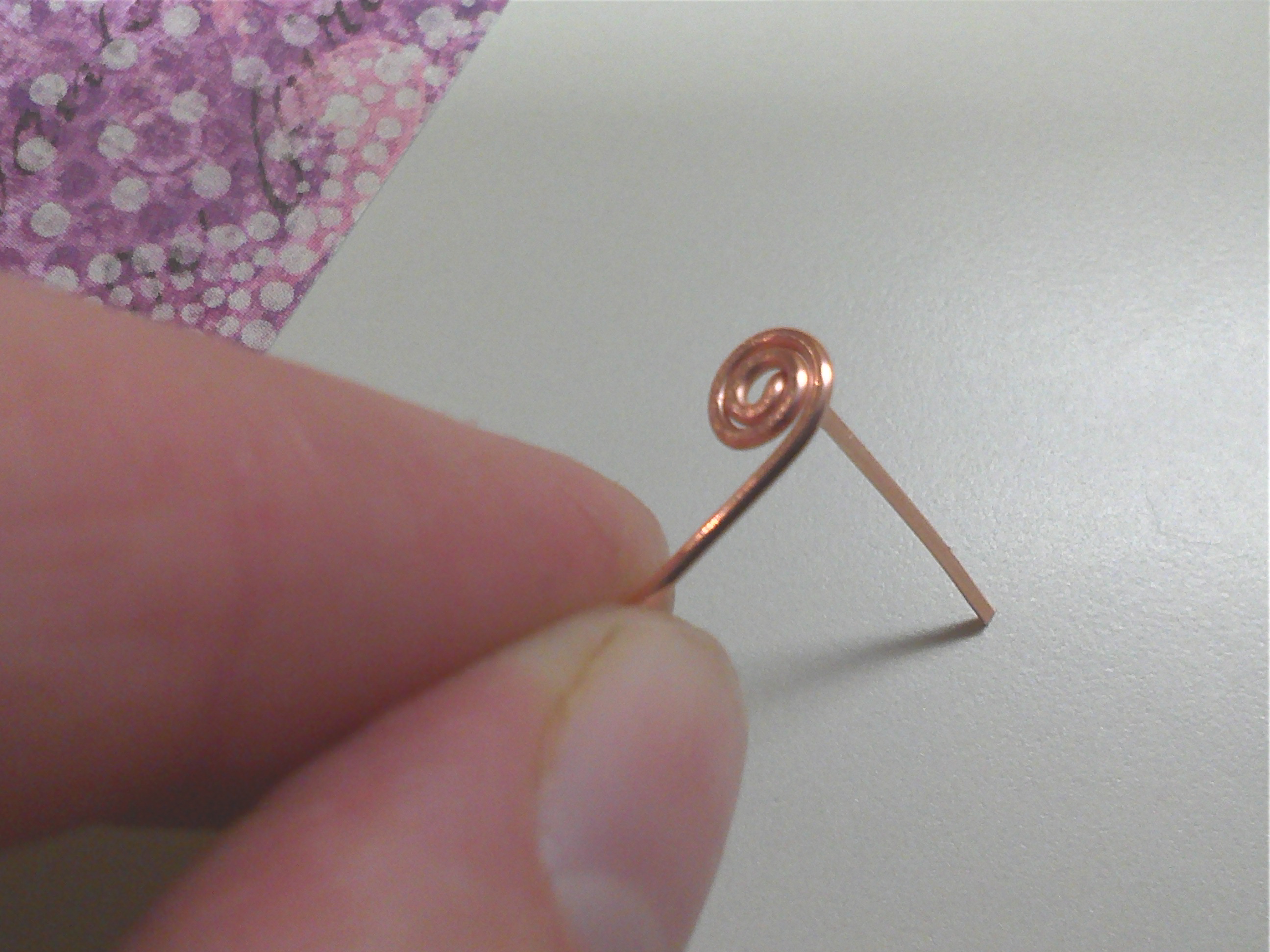
You can see the earring being formed. The post that goes into your ear is coming from the center of the loop.
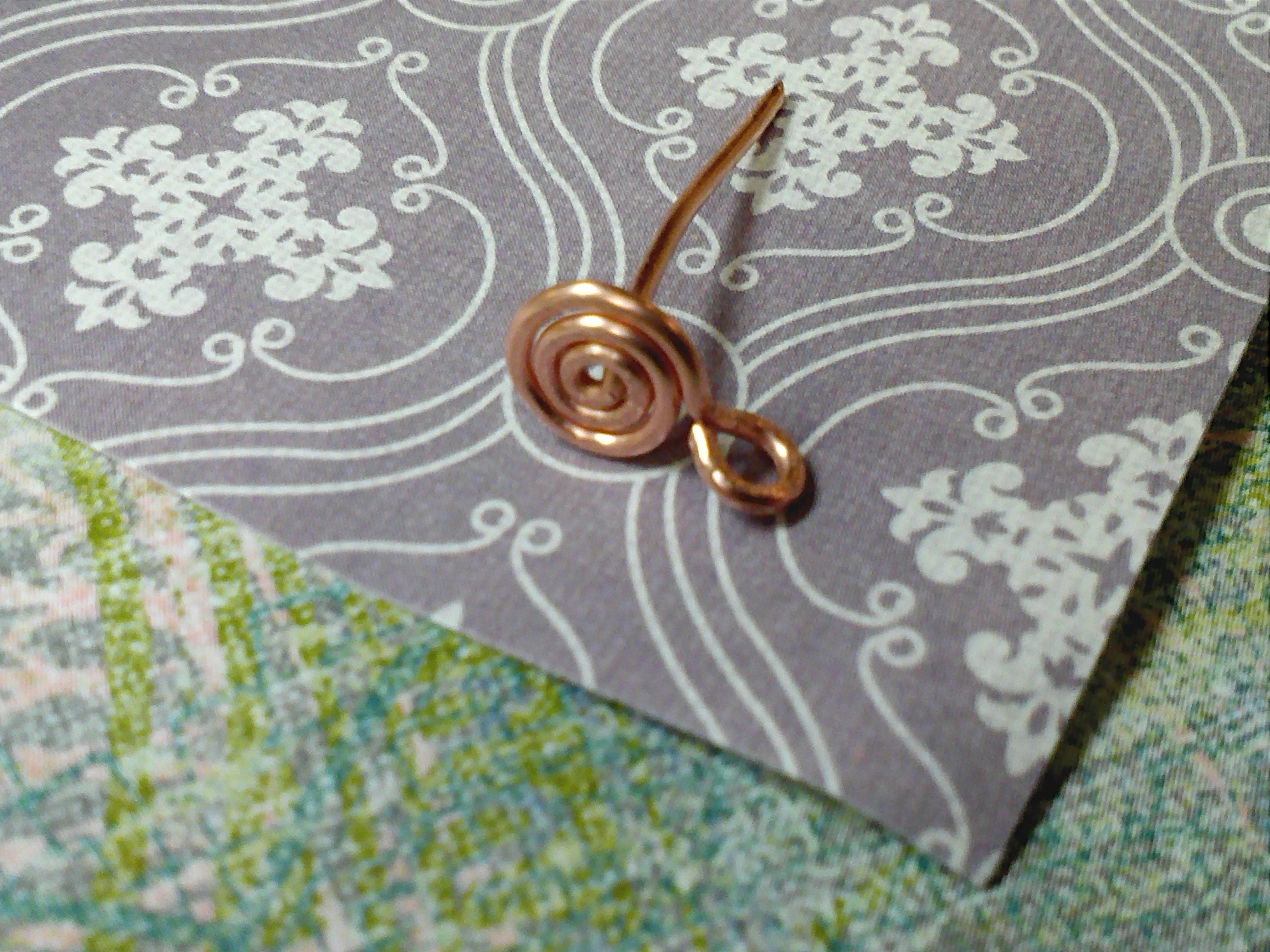
Make a loop to complete your Swirly Earring Post. Also, make sure the ends of the post are smooth. You can do this with either a metal file or a cup bur.

To finish, I used Liver of Sulfur to give the earring wires a patina, then buffed them with steel wool. To prevent your ears from turning green, seal the post with a little Renaissance Wax or clear nail polish.
3. Egyptian Coils!
Now that you have mastered head pins and earring post, you can move onto the ultimate swirly design, the coveted Egyptian Coil! This design feature multiple swirls and looks so pretty at the top of dangly earrings or as an entire bracelet.
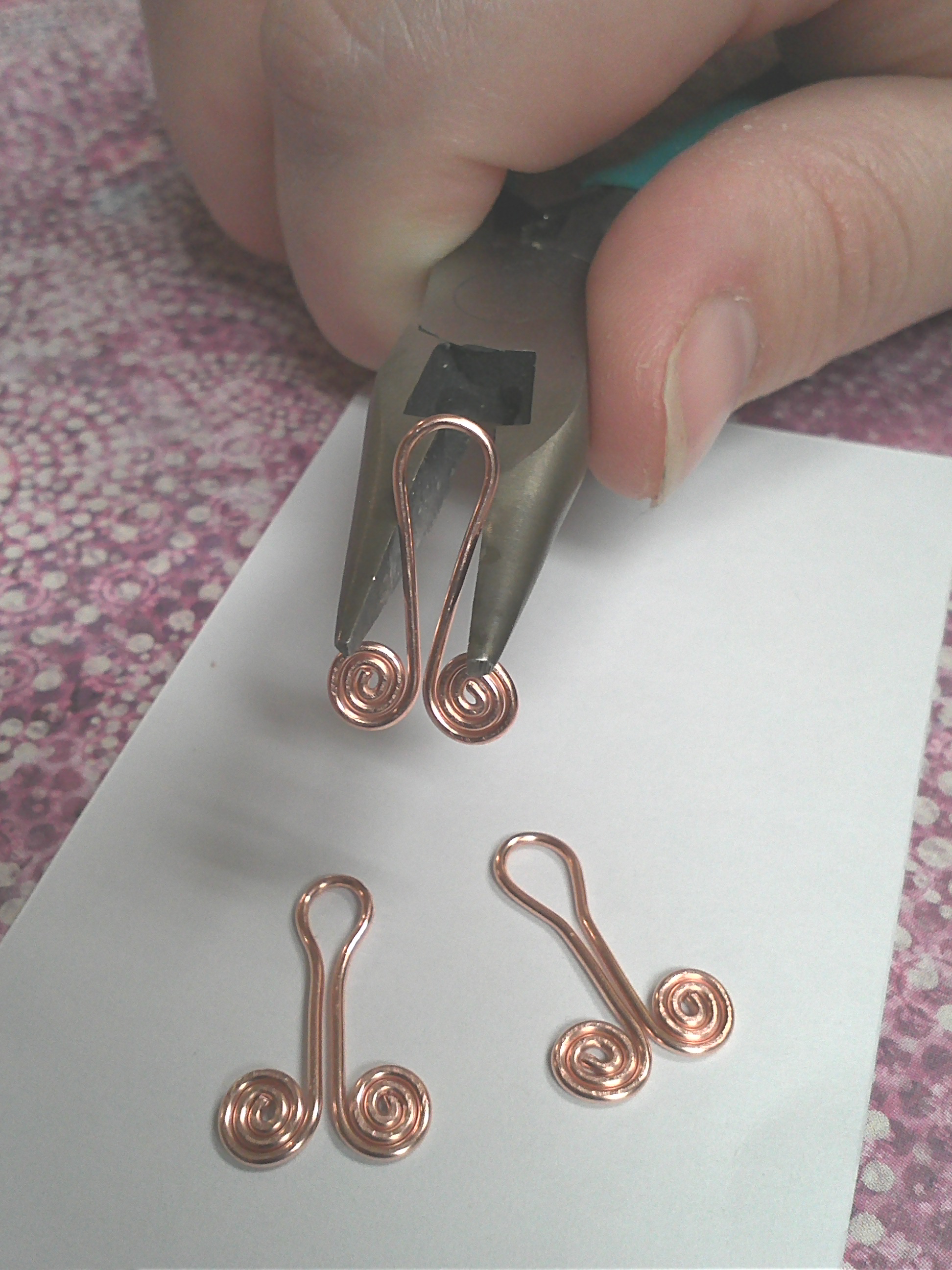
Use your chain nose pliers to flatten links like so. Don’t be alarmed, it is supposed to look kind of phallic at this point.
Well I hope you enjoyed my swirly blog post and are now inspired to try out some of these ideas. For all of these earrings I used bare copper wire and then oxidized the wire with Liver of Sulfur to antique it. I then buffed the designs with steel wool to expose the bright copper. I highly recommend doing this with your swirl designs because is really makes those curly-Q’s stand out.
~~Tiffany in the Showroom
Feel free to ask me any questions about how I did anything or what materials I used for all the designs.
Hello, bloglandia! Our sales manager, Sondra, was fortunate enough to attend Tracy Stanley’s “Bangles with a Message” class at Bead & Button last month. We’ve been oohing and ahhing over her wristful of chunky metal, so yesterday we got together and made some of our own bracelets.
For a sturdy yet slightly flexible bracelet base, we used 14 gauge copper wire. Start with about 10-11″ of wire. Simply form a large loop on one end with round nose pliers and hammer slightly. Slide on lots of large hole beads: 14 gauge wire is about 1.63mm, so your beads need to have holes that are at least 1.7mm big. Anything marketed as a Pandora or European-style bead will easily fit.
We mostly used metal, but trade beads and gemstones look great too. TierraCast has some especially nice large hole metal beads. You can also add coils of wire as decoration beneath floating beads, or as stoppers between beads. Shape the wire into a bracelet shape around your wrist and finish with another loop.
You can connect the two end loops together directly, connect them with jump rings or add a jewelry clasp. It is better to err on the small side, since a too-small bracelet can be extended with a jump ring or two, while a too-large bracelet will just go flying off your wrist!

Lindsey used a few jump rings to make her bangle fit her wrist – and a rooster to make it fit her personality!
A couple of other bracelet-making tips:
- Patina your wire, decorative coils and other components before assembling your bracelet.
- Be sure to file down any sharp wire points or metal edges.
- Have a whole bunch of beads ready, because once you start, you’ll want to make a bunch!
Check out Tracy’s teaching schedule if you’re interested in learning how she makes stamped word charms to fit on bangles. Our new brass and copper strips will save you a lot of sawing and cutting time!
~Cindy

